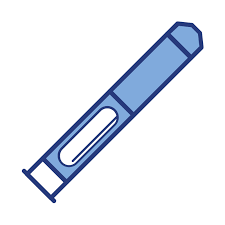Lifestyle modifications
More information about lifestyle factors can be found on the Migraine Trust website.
Sleep in sufficient quantity is important for all headaches. Migraine can also be brought on by sleeping too much, e.g. on weekends. Insomnia should be managed by behavioural change rather than by medication, amitriptyline can however be helpful as an addition.
Diet can affect headaches, primarily as skipping meals can bring on a headache. Some patients with migraine have specific triggers such as citrus or cheese but they are usually well aware of this and there’s not need to go on an extreme diet.
Drinking too much alcohol brings on a headache. In particular, red wine is often a trigger for migraine. Caffeinated drinks can help relieve a headache in the short term but then cause a rebound headache, similar to medication overuse headaches, and it’s therefore often best to avoid caffeine especially in the evenings.
Smoking can make all headaches worse. When patients with cluster headache smokes, this will prevent them from having oxygen treatment.
Exercise can improve headaches. We recommend exercise intense enough to cause shortness of breath at least a couple of times a week, and also regular relaxation exercises such as yoga / tai chi to prevent muscle tension can also be helpful.
Mindfulness has been shown to be helpful in all types of chronic pain.
Rescue medication
Pain killers are sufficient treatment for most persons with headache. It’s important not to use pain killers too often, but it’s also important to use pain killers early enough and in high enough doses when needed. If one treatment hasn’t worked on 2-3 occasions, try another combination or increase the dose. The goal is to become pain free within an hour.
Paracetamol is typically only helpful for mild headaches.
NSAID are usually helpful for headaches. Ibuprofen up to 600mg, Naproxen up to 500mg, and Aspirin up to 900mg is often needed for migraine. Naproxen is more long-lasting than ibuprofen, and Aspirin might be more effective for migraines than the other two. These medications can cause stomach ulcer. Most persons with asthma can use them.
Triptans are the most effective pain killers for migraine. Start with sumatriptan 50mg. If not effective, combine with NSAID or try 100mg next time. If still not effective, try another triptan. There are four triptans on the Dorset formulary: sumatriptan, zolmitriptan, rizatriptan, frovatriptan. The first three are similar but frovatriptan has slower onset and longer duration. Sumatriptan and Zolmitriptan exist as nasal spray which is useful if the headaches are quick onset or come with severe nausea – in these cases sumatriptan injection is also an option. On the BNF, there are also naratriptan, eletriptan, and almotriptan.
Rimegepant is an alternative for patients who cannot take triptans, or where two triptans have tried and are ineffective. It has slow onset, but the effect lasts up to two days.
Anti-nausea medication reduce nausea and can also improve the uptake of the pain killers. Three options commonly used in migraine are prochlorperazine, domperidone, and metoclopramide. They can all cause tiredness. Domperidone can also cause arrhythmia. Metoclopramide, and to a lesser extent prochlorperazine, can cause neurological side effects.
More about Triptans
It’s usually best to not use triptans more than two days in a row, or more than ten days in the same month. Using 12 or even 18 triptans every months doesn’t need to mean that anything is wrong but is usually a signal that it is time to discuss preventatives.
Triptans can be safely combined with SSRI and other serotonergic medications, as long as the patient is feeling well.
Never combine triptans with ergotamine (rarely used now).
Triptans can be combined with CGRP medications including gepant prevention.
There is extensive safety data for sumatriptan. Occasional use of other triptans is believed to be safe.
Persons with ischaemic heart disease or previous TIA/stroke should not use triptans, as this can trigger new symptoms. This risk is small.
The traditional recommendation has been to not to use triptans after age 65 due to concern about vascular risk. I wouldn’t start triptans after age 65 in a patient who hasn’t had them before, but if a patient has had them for years and they are working well I wouldn’t stop them just because of age. Discuss, assess vascular risk, and make an individual decision. If needed ask neurology for advice. An alternative to triptans in this situation is rimegepant.
Hemiplegic migraine can mean many things – sometimes a genetic condition with frequent stroke like attacks and seizures, and sometimes just migraine with severe auras. Triptans have traditionally not been recommended in hemiplegic migraines due to concern about stroke. In practice, the risk is low but it makes sense to wait with the triptan until the aura starts to resolve, and instead take Aspirin 900 mg at the onset of the aura. If the more severe genetic form is suspected, refer to neurology.
Oral Preventative medication
The standard migraine preventatives were developed to treat hypertension, depression or epilepsy and the effect on migraine was discovered later. Before starting, it’s important to be aware that the effect will build up over a couple of months and that a realistic goal is to reduce the number of headache days by 30-50% and make the headaches milder. If migraines improve, we recommend to try to come off the preventative after a year.
It’s common to have to abandon one or several medications because of side effects – but this can be prevented by choosing the right preventative by starting on a low dose. Sometimes the medication can have more than one use – e.g. amitriptyline for other kinds of pain and sleep, or propranolol for tremor and hypertension.
This table is a suggestion, and it’s possible for each of these medications to go up to double the dose suggested if needed. Compared to previous guidelines, we now use candesartan more, and we have stopped using gabapentin and pizotifen for migraine in adults.
Oral migraine preventatives.
| Medication | Good when | Side effects | Starting dose | Aim for dose |
|---|---|---|---|---|
| Candesartan | Hypertensive, vascular disease. | Hypotension | 2-4 mg | 16mg |
| Propranolol | Anxiety, palpitations, POTS. | Hypotension, cold hands, asthma | 10 mg bd | 80mg MR bd |
| Atenolol | Anxiety, palpitations, POTS | Hypotension, cold hands, asthma | 25 mg | 100mg |
| Amitriptyline | Insomnia, pain, anxiety. | Drowsiness, memory difficulties, dry eyes, constipation. | 10 mg at night | 30 mg night |
| Venlafaxine | Depression, anxiety, pain. | Drowsiness, nausea, weight gain. | 37.5 mg | 75 mg |
| Duloxetine | Depression, anxiety, pain. | Drowsiness, nausea, weight gain. | 20 mg | 60 mg |
| Topiramate | Chronic migraine, obesity | Brain fog, anxiety, weight loss, kidney stones | 25 mg at night | 50 mg bd |
Injectable preventative medication
Botox and anti-CGRP can only be prescribed in the Headache Service, and is only available for patients with chronic migraine that have failed three oral preventatives, and where medication overuse has been addressed. An occipital nerve block can give temporary relief both for migraine as well as for neck-related headaches and cluster headaches. This could be done in primary care and we’d be happy to teach you.

Botox
Injections at the hospital every 12 weeks

Anti-CGRP
Injections at home once a month:
Emgality, Ajovy and Aimovig

Nerve block
Temporary pain relief:
Cortisone and local anaesthetic
Rimegepant and Atogepant
Rimegepant was mentioned above as an acute medication and can then be prescribed in primary care. When used as a migraine preventative, these medications are currently hospital only in Dorset (although we hope that this will change during 2025).
Both these medications work by blocking CGRP. Atogepant is taken every day and can be used for between 4-30 headache days a month. Rimegepant is taken every second day and can be used for 4-15 headache days a month. A criteria for trying these is that at least three other preventatives have been tried first, and due to limited capacity we mainly use these in patients with severe or frequent migraines. They can cause dizziness but have few other side effects, but can interact with a few other medications, for instance verapamil, carbamazepine, and antifungals. You can read more about atogepant in this patient information leaflet.
